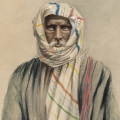-
Content Count
3,096 -
Joined
-
Last visited
-
Days Won
35
Content Type
Profiles
Forums
Calendar
Everything posted by Holac
-

Ahlu Sunna Waljamaca , Galmudug regional state sign new power sharing deal
Holac replied to malistar2012's topic in Politics
Which faction of Ahlusunna? There are many claiming to be Ahlusuna. Why isn't the top leader of Ahlusunna There? -
Is that all that they could come up with? What a waste of opportunity. They could have done an excellent program on this historic city.
-
Tallaabo, I think Saalax often displays political maturity and independence not seen among Landers. That is a good thing.
-
Siilaanyo's chickens are coming home to roost.
-
There is no denying this move is the most serious threat to Culusow's political future.
-
Culusow clearly alienated quite a few people.
-
Somaliland situation is dire if a two mayor solution is being considered for Hargeisa.
-
Goats exported by Somaliland come from all of over Somalia and Ethiopia.
-
The latest news is that the President is getting ready to visit the bank so that he can disburse the needed cash to squash this.
-
Another story of a "savage African" going on a rampage looking for anything valuable to destroy. What is new?
-
WASHINGTON — In the winter of 2014, an Afghan with links to top Taliban leaders approached Afghanistan’s intelligence service with a startling tip: Mullah Muhammad Omar, the secretive leader of the Taliban, had died in a hospital in Karachi, Pakistan. The tip left the intelligence service, the National Directorate of Security, with a mystery that would take 18 months to begin unraveling. But even with the Taliban confirming on Thursday that the man they called Emir al-Momineen, or Commander of the Faithful, was dead, American and Afghan officials said they were just starting to piece together the story of Mullah Omar’s final years and of his demise. In interviews, Afghan, American and European officials offered insight into why it took so long to determine that Mullah Omar was dead: He may have been one of the world’s most wanted men — he carried a $10 million American bounty on his head — but by 2014 few people outside Afghanistan seemed to want him enough to put much effort into finding out whether he was dead or alive. American officials said they had long ago come to believe that Mullah Omar’s role in the insurgency was primarily spiritual, and that he had little to no operational control over the Taliban. In an interview last year, a former American military commander went so far as to compare Mullah Omar to the medieval Spanish commander El Cid, whose corpse, according to legend, was suited with armor and propped up on a horse to bolster Spanish troops fighting the Moors. “It’s not that we weren’t trying to find him; we just never had the lines to do it,” said James B. Cunningham, a former American ambassador to Afghanistan. “Even most of the Taliban didn’t know where he was.” Mr. Cunningham said that while “it’s probably fair to say” that the United States “caught a break on” Osama bin Laden, that never happened with Mullah Omar. The United States and its European allies became convinced of Mullah Omar’s death this week only because word had finally gotten out among senior Taliban leaders, who were telling anyone who would listen, a Western official said. No body has been produced, and the Taliban have either kept the location of his grave a secret or do not know where he is buried. Pakistan has said nothing official about his death. When the Afghans got their initial tip in 2014, American and European officials dismissed it as the latest in a long string of rumors about Mullah Omar’s demise, American and Afghan officials said. Unlike in the case of Bin Laden, who was killed in an American military raid in Pakistan in 2011, there was no C.I.A. team dedicated to hunting down the Taliban leader. “I had the feeling also that they were not very much interested in the top leadership; they were more interested in field commanders, because it’s the field commanders we were facing in the battlefield,” said Umar Daudzai, who was Afghanistan’s interior minister from 2013 until late 2014. The Western skepticism was not without reason. The Afghan intelligence service was still very much a work in progress, and even some Afghan security officials were doubtful, including Mr. Daudzai. “There were always various rumors — that he got killed or died of disease, but nothing would be confirmed, then the rumor would die down,” he said in a telephone interview. “So I was more on the side that we didn’t know what was happening with him.” Hunted from the war’s outset, Mullah Omar had not been seen in public since late 2001, when he fled underground without leaving behind so much as an official photograph. He released no videos or audio messages in the years that followed. Yet even by Mullah Omar’s standards, his elusiveness in his final years was remarkable. Only a handful of high-ranking Taliban had any access to their leader, and by the middle of 2013 that number had been winnowed to one: Mullah Akhtar Mansour, effectively the No. 2 in the insurgency. By then, Afghan and American officials said, their intelligence indicated that Mullah Omar was probably dead. That means that Mullah Mansour may have spent most of the past two years deceiving his fellow insurgents by claiming to pass on orders and messages from Mullah Omar, the officials said. Mullah Mansour’s statements appear to have aroused the suspicion of two of Mullah Omar’s relatives: his son, Mullah Yaqoub; and his brother Mullah Abdul Manan. Both had previously had access to Mullah Omar, and they began telling people that they believed they were being kept away because he was dead. Their discussions led to the initial tip picked up by the National Directorate of Security, Afghan officials said, speaking on the condition of anonymity because they were discussing intelligence matters. But since so few people had seen Mullah Omar when he was alive, “it was difficult to find other sources who could tell us if he was dead,” said a senior Afghan security official. Afghan officials said they received no help from Pakistan, which had long sheltered and aided the Taliban. Officials there said they had no idea whether Mullah Omar was alive, the Afghan officials said. So the Afghans waited. In the fall of 2014 and winter of 2015, Afghan officials said, they intercepted two letters written by disaffected Taliban commanders who both referred to the possible death of Mullah Omar. The letters, copies of which were provided to The New York Times, were intended for other Taliban commanders, and large parts of both were rants against Mullah Mansour. Although the authenticity of the letters could not be independently verified, Afghan officials said they were genuine. In November, the intelligence service suggested during a news conference that Mullah Omar was dead, which Afghan officials said in recent days was a ploy intended to draw him out, if he was alive. After the news conference, there remained little talk among Taliban members of Mullah Omar’s being dead, though many insurgents were grousing about his absence. American and European intelligence agencies, meanwhile, were picking up nothing substantive. Then, last week, Feday-e-Mahaz, a breakaway Taliban faction, posted a statement on its Facebook page saying that “the whereabouts of Mullah Omar is known to everyone, and his grave is in Zabul, may his soul rest in peace.” Zabul is a province in southern Afghanistan. The statement appears to have spurred speculation throughout the ranks of the Taliban, and the talk quickly prompted Mullah Mansour to begin telling his compatriots that Mullah Omar had died. At that point, not only did intelligence operatives begin picking up the chatter, but diplomats and other officials also began getting calls from people with connections to the insurgency, Afghan and Western officials said. “The eighth time you hear it, and it’s the same story, it seems pretty clear,” a Western official said. But beyond the fact of Mullah Omar’s death, the chatter appears to have revealed little else. “He could have died two weeks ago, or two years ago,” an American official said. “We think we know, but we don’t know we know.” A version of this article appears in print on July 31, 2015, on page A8 of the New York edition with the headline: Life Shrouded in Rumors Ends With Little Clarity . http://www.nytimes.com/2015/07/31/us/politics/mullah-muhammad-omars-life-ends-with-little-clarity.html?hp&action=click&pgtype=Homepage&module=photo-spot-region®ion=top-news&WT.nav=top-news&_r=0
-
At Zoo Miami. http://miami.cbslocal.com/photo-galleries/2015/07/24/zoo-miami-welcomes-newborn-somali-wild-ass/
-
Faroole is welcomed by his clan family. No surprise there.
-
Does the opposition offer a clear alternative? Sometimes things don't turn out as planned. Hopefully the people of Somaliland will use common sense to find a path forward.
-
Is the caleemosaar over? Where are the pictures?
-

Jazeera Hotel Suicidebomber is ictiraaf-seeker from Germany
Holac replied to somalia4somalis's topic in Politics
Most people who commit suicide bombings are driven by religious ideology, but when someone was already preconditioned to hate a certain clan and they become radicalized, the attack can be devastating because that person feels no empathy for that clan. This is what is happening with all the destruction of valuable Mogadishu assets. There is a clear trend. -
Apparently the city is in the hands of Ahalu Sunnah forces and it is confirmed. This is a setback for the new Galmudug administration.
-
Dahabshiil is accused of causing so many problems in Somalia. Why is that? Are all these accusations false? Something is seriously wrong here.
-

Ugaasada amongst the dead in Jazeera hotel bombing RIP
Holac replied to Hassan1508736697's topic in General
Ugaaso Boocoow? Are you serious?



